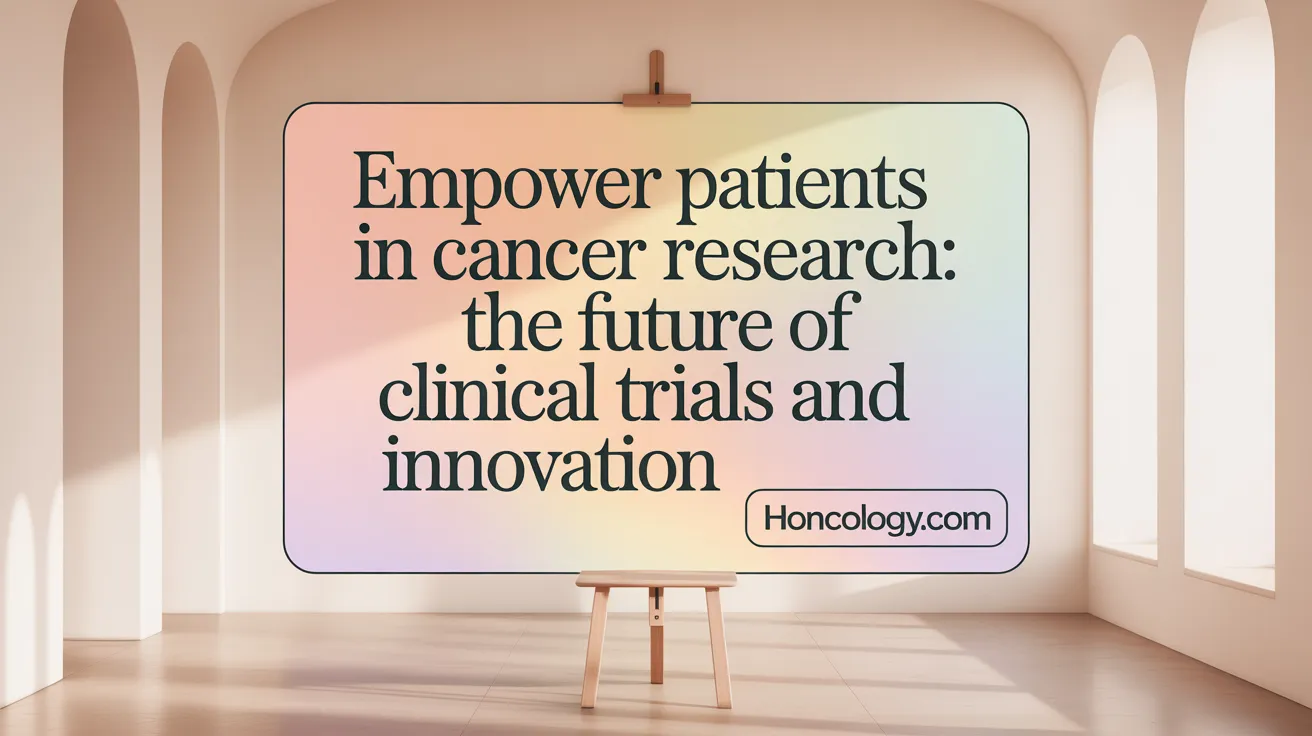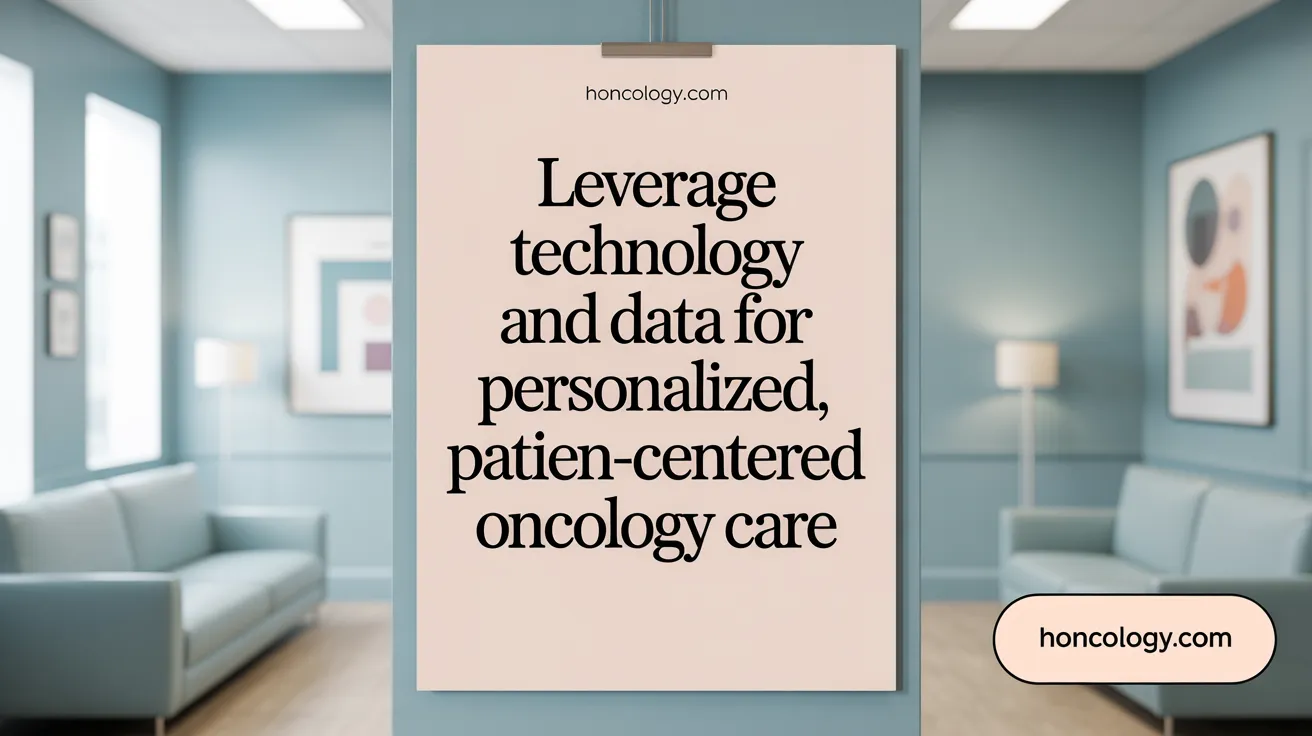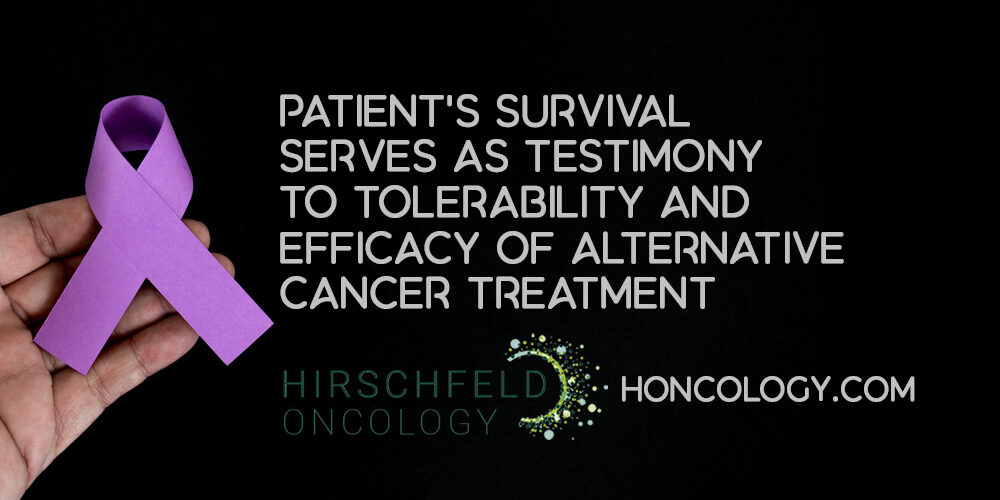Overview of Patient-Centered Approaches Transforming Oncology
Defining Patient-Centered Care in Oncology
Patient-centered care in cancer treatment means focusing on the whole person, not just the disease. It involves respecting patients’ values, preferences, and needs, and tailoring all aspects of care accordingly. This approach includes clear communication, coordination across healthcare providers, emotional support, involvement of family, and smooth transitions throughout treatment phases.
Integrating Patient Values and Preferences
Cancer care plans that honor individual beliefs, culture, financial situation, and lifestyle help reduce disparities in outcomes. Involving patients in shared decision-making empowers them to express concerns, ask questions, and actively participate in their treatment. This fosters trust and improves adherence, ensuring treatments align more closely with what patients find acceptable and meaningful.
Impact on Therapeutic Outcomes
Implementing patient-centered approaches in oncology leads to better quality of life, reduced anxiety, and enhanced satisfaction. Effective communication and care coordination prevent treatment delays and complications, while psychosocial support addresses emotional distress. Studies show that these strategies improve symptom management, increase treatment adherence, and can even boost survival rates, making patient-centered care vital to successful cancer therapies.
Foundations and Principles of Patient-Centered Cancer Care

What are the Institute of Medicine's dimensions of patient-centered care?
The Institute of Medicine (IOM) identifies eight core dimensions defining patient-centered care that are essential in oncology:
- Respect for patients’ values, preferences, and needs
- Coordination and integration of care
- Information, communication, and education
- Physical comfort
- Emotional support
- Involvement of family and friends
- Continuity and transition
- Access to care
These dimensions guide care delivery to meet all aspects of a patient's experience and preferences.
How does holistic treatment play a role in cancer care?
Holistic cancer care treats the patient as a whole person, addressing not only physical symptoms but also emotional and social needs. This involves managing psychological distress such as anxiety and depression, providing social support, and considering lifestyle and personal circumstances. Such an approach improves quality of life and adherence to treatment and psychosocial health.
What is collaborative decision-making and personalization of care plans?
Collaborative decision-making in oncology involves clinicians and patients working together to develop treatment plans based on medical evidence and patient preferences. Personalization means tailoring treatments to the patient's unique biology, culture, socioeconomic status, and values, ensuring care is relevant and meaningful. This approach enhances patient engagement and satisfaction and often leads to better outcomes by respecting patient preferences and supporting decision-making.
What roles do communication, coordination, continuity, and compassionate care play?
Effective communication ensures patients fully understand their diagnosis, treatment options, side effects, and next steps. Coordination integrates multiple providers to deliver consistent, timely care. Continuity supports smooth transitions between treatment phases or providers. Compassionate care addresses emotional well-being and fosters trust and support throughout the cancer journey.
Collectively, these principles form the foundation of patient-centered oncology care, improving clinical results and enhancing the patient experience.
Enhancing Communication and Coordination to Optimize Treatment
Challenges in care coordination with multiple providers
Cancer care often involves a complex network of healthcare professionals, with patients consulting anywhere from 10 to 28 different providers. This complexity can lead to fragmented care and miscommunication, resulting in delayed treatments, adverse drug interactions, and psychological distress. Without seamless coordination between oncologists, primary care, specialists, and supportive services, patient safety and outcomes may suffer. See more on Effective cancer care coordination and collaborative decision-making in oncology.
Importance of effective communication to improve treatment adherence and patient engagement
Open and respectful communication between patients and their care teams is vital. When patients clearly understand their treatment plans, feel their emotions are acknowledged, and are involved in decision-making, they tend to adhere better to therapies and report higher satisfaction. Effective dialogue also helps manage expectations and reduces uncertainty during cancer treatment. Learn more about Patient-centered communication benefits and Patient engagement in care decisions.
Use of personal health records and patient self-advocacy
Given the complexity of cancer care, patients often need to take an active role in managing their own information. Maintaining personal health records—whether electronic or paper-based—allows patients to track appointments, medications, test results, and care plans. Self-advocacy, including asking questions and expressing preferences, empowers patients to participate in their treatment actively, leading to better health outcomes. For more, see Using Personal Health Records and Patient Role in Care Coordination.
Strategies to overcome communication barriers and promote shared decision making
To bridge communication gaps, healthcare providers are encouraged to foster an environment supporting shared decision-making, where patient values and preferences are prioritized. Techniques such as setting SMART goals (Specific, Measurable, Achievable, Realistic, Time-bound) assist patients in staying motivated and organized. In addition, involving family members and peer support groups helps patients navigate complex information and emotional challenges. Training clinicians to enhance patient-centered communication also strengthens the patient–provider relationship, ultimately optimizing cancer care delivery. See resources on Shared decision-making in cancer treatment, Emotional support in cancer care, and Patient engagement in care decisions.
Integrating Patient-Reported Outcomes (PROs) for Better Symptom Management

What Role Do Patient-Reported Outcomes (PROs) Play in Capturing Patient Symptoms and Quality of Life?
Patient-Reported Outcomes (PROs) are direct reports from patients concerning their symptoms, treatment side effects, and overall quality of life, without interpretation by clinicians. PROs provide valuable insights into the patient's experience of their disease and therapy, enabling clinicians to understand symptom burden and health-related quality of life (HRQoL) more accurately. This information helps identify symptom distress or treatment toxicities that might be otherwise under-recognized in clinical visits (Patient-Reported Outcomes in Oncology, Patient-reported outcome measures (PROMs) in cancer care).
What Evidence Supports Integrating PROs to Improve Survival and HRQoL?
Multiple studies, including meta-analyses of randomized trials, demonstrate that systematic collection of PROs enhances early symptom detection and management. This leads to meaningful improvements in HRQoL and may contribute to improved overall survival; for instance, a hazard ratio of 0.84 indicated a survival benefit associated with PRO use. PRO integration also reduces symptom severity and increases patient satisfaction, underscoring its impact on patient-centered outcomes (Improving Cancer Care with PROs, Patient-Reported Outcomes in Oncology, Patient-Centered Cancer Care).
What Are the Implementation Challenges and Strategies for Electronic PRO Collection?
Technological advances now allow electronic collection and integration of PROs into clinical workflows and electronic health records (EHRs). Still, challenges include selecting appropriate questionnaires, determining the frequency and mode of administration, ensuring ease of use for patients, and clinician engagement. Successful implementation requires engaging clinical champions, designing user-friendly reports, and aligning data collection with clinical decision-making to avoid burden on staff and patients (Enhancing Communication with PROs, Patient-Reported Outcomes in Oncology).
How Are PROs Applied in Clinical Decision Making and Personalized Treatment Planning?
PRO data inform personalized care by highlighting symptoms that need targeted intervention, monitoring treatment adherence, and predicting outcomes such as functional recovery and survival. During clinical encounters, PROs guide discussion on patient concerns and help tailor therapy plans accordingly. Aggregated PRO information supports quality improvement initiatives and the development of predictive models, enabling a more precise and patient-centered approach to oncology care (Patient-centered cancer care, Patient-Reported Outcomes in Oncology, Effective cancer care coordination).
Personalizing Treatment Through Precision Oncology and Targeted Therapies
Advances in Molecular Profiling and Targeted Agents
Precision oncology leverages molecular profiling in precision oncology to identify specific genetic alterations in tumors, allowing treatments to be tailored to the individual patient's cancer. This approach has led to the development of targeted agents such as small molecule targeted agents and antibody-drug conjugates (ADCs) that precisely attack cancer cells while sparing healthy tissue. Techniques like cryo-electron microscopy and artificial intelligence in drug development have accelerated discovery and design of drugs against challenging targets, including mutations in KRAS.
Emerging Therapies Including Immunotherapy, Gene Therapy, and CAR-T Cells
Innovative treatments further include immunotherapies that strengthen the patient’s own immune response against tumors. CAR-T cell therapy, approved for certain leukemias and lymphomas, involves engineering a patient’s immune cells to better recognize and destroy cancer. Gene therapies using tools like CRISPR/Cas9 gene editing enable precise genetic modifications, while cancer vaccines and oncolytic viruses promote long-term immune memory and tumor cell destruction. Advances in delivery systems such as lipid nanoparticle delivery enhance the safety and effectiveness of these cutting-edge therapies.
Benefits of Tailoring Therapy to Tumor Genetics and Patient Preferences
By focusing on the molecular characteristics of tumors and integrating patient preferences, patient-centred care in precision oncology fosters personalized treatment plans that improve efficacy and minimize side effects. This patient-centered strategy respects individual needs and values, enhancing shared decision-making and treatment adherence. It also helps to avoid unnecessary toxicities common with traditional chemotherapy approaches.
Impact on Clinical Outcomes and Quality of Life
Personalized targeted therapies and immunotherapies have significantly improved clinical outcomes, including higher response rates and prolonged survival in many cancers. They also contribute to better quality of life and symptom management in cancer patients by reducing symptom burden and treatment-related toxicities. The integration of these therapies aligns with patient-centered cancer care goals, enhancing both psychological well-being and physical health throughout cancer treatment.
Addressing Psychosocial Needs to Support Therapeutic Success
Psychological challenges faced by cancer patients affecting adherence and recovery
Cancer patients frequently endure emotional distress, including depression and anxiety, which can critically impair their ability to adhere to treatment plans and recover effectively. Such psychosocial problems in cancer patients not only affect patients' mental health but also contribute to delays or interruptions in their care.
Importance of psychosocial services including counseling, support groups, and education
Access to comprehensive psychosocial services—such as counseling, therapy, support groups, and patient education—is essential. These services have proven effective in reducing emotional distress in cancer care and fostering patient empowerment by enabling individuals to engage more actively in managing their health.
Barriers to psychosocial care and strategies to overcome them
Despite their importance, psychosocial needs are often under-addressed due to factors like poor communication between providers and patients, limited provider awareness, and scarce resources. Strategies to overcome these barriers include routine needs assessments, better training for healthcare professionals, addressing psychosocial needs, integrated psychosocial care into cancer treatment, and strengthening referral pathways to specialized services.
Role of family and community support in enhancing emotional wellbeing
Family members and community support systems play a vital role in enhancing the emotional wellbeing of cancer patients. They provide practical assistance with care coordination and emotional comfort, reducing patients' psychological burden. Family and peer support and community resources offer shared experiences and guidance that improve self-efficacy and resilience.
Effective psychosocial care is a fundamental component of quality cancer care and psychosocial support, simultaneously promoting better adherence, recovery, and overall quality of life for patients.
Overcoming Disparities and Tailoring Care to Diverse Patient Populations
How Do Cultural, Socioeconomic, and Geographic Factors Impact Cancer Outcomes?
Cancer outcomes vary significantly across different populations, driven by cultural norms, socioeconomic status, and geographic location. For example, Black individuals generally experience higher cancer mortality rates and Black women face disproportionately higher breast and cervical cancer death rates compared to White women. Rural residents, such as those in Appalachia, endure elevated rates of colorectal, lung, and cervical cancers compared to urban populations. Additionally, higher levels of education correlate with lower premature colorectal cancer mortality regardless of race or ethnicity. These disparities reflect complex intersections of access, awareness, and systemic inequities. For more information, see Personalized cancer care.
What Strategies Help Address Implicit Bias and Health Inequities?
To combat healthcare disparities, oncology teams can utilize tools designed to identify and mitigate implicit bias and social determinants influencing patient care. Programs like those developed by the Association of Community Cancer Centers (ACCC) provide surveys, educational content, and video series that foster awareness around healthcare injustice. These resources promote culturally competent cancer care, helping providers recognize underlying bias and improve equitable treatment delivery. Clear communication and respectful dialogue further support reducing inequities. Explore ACCC educational tools on implicit bias and culturally competent cancer care.
Why Is Personalized Care That Respects Identity, Language, and Social Determinants Essential?
Personalized cancer care extends beyond biology to include patients’ cultural backgrounds, language preferences, religious beliefs, financial situations, education levels, and lifestyle factors. Recognizing and honoring these elements ensure treatments align with patients’ values and needs, fostering better engagement and adherence. Ignoring these factors risks perpetuating disparities and suboptimal outcomes. Tailoring care also means providing language support and culturally sensitive navigation through complex healthcare systems. Read about patient-centered oncology care that respects social determinants and personal identity.
What Resources and Training Enhance Health Equity in Oncology?
Health equity in cancer care benefits from comprehensive training and resource allocation. Oncology providers and teams can access ACCC’s resource library that includes practical guidance on addressing social determinants, bias reduction, and culturally competent communication. Continuous workforce development, supported by professional societies and accreditation bodies, promotes skills necessary for equitable care delivery. Such initiatives empower clinicians to provide inclusive, patient-centered cancer care to diverse populations. Find more at health equity resources and workforce development in cancer care.
Safety and Quality Practices to Enhance Therapeutic Outcomes
What are common patient safety risks in cancer care?
Cancer care involves complex treatments and multiple providers, which increases the risk of safety issues. Common patient safety risks include:
- Diagnosis-related failures (accounting for 30% of safety incidents), such as delays or inaccuracies in identifying cancer (Preventing diagnosis delays in cancer "Patient safety in oncology").
- Improper treatment management (about 21%), including mistakes in therapy administration or planning.
- Medication management errors (around 14%), particularly involving chemotherapeutic drugs where dosage and timing are critical (Medication safety in cancer treatment.
These risks can lead to delayed treatment, adverse drug reactions, and compromised patient outcomes (Patient safety in oncology.
What strategies improve patient safety in oncology?
Effective safety strategies include:
Test Tracking Systems: Implementing alerts for missing or abnormal test results ensures timely follow-ups and avoids delays in diagnosis or treatment adjustments (Communication of abnormal diagnostic results.
Staff Training: Educating clinical personnel on chemotherapy protocols, medication ordering standards, and recognizing adverse effects enhances safety (Training in psychosocial care "psychosocial problems in cancer patients").
Interdisciplinary Collaboration: Close communication among oncologists, pathologists, radiologists, nurses, and pharmacists fosters accurate diagnosis, coordinated treatment plans, and effective side effect management (Collaboration with pathologists and radiologists.
Standardized Protocols: Using structured order forms and policies, such as prohibiting verbal chemotherapy orders, reduces medication errors (Standardized order forms for chemotherapy.
How does building a culture of safety improve care?
A culture of safety promotes openness to reporting errors and system weaknesses without blame. Key aspects include:
- Acknowledging risks and addressing human factors that contribute to errors (Creating a safe and just culture in oncology.
- Encouraging transparent communication and continuous learning.
- Allocating resources for safety improvements.
- Engaging all staff in safety practices and fostering teamwork (Developing a culture of safety in oncology.
Such an environment builds patient trust and supports high-quality care delivery.
What is the role of technology and protocols in enhancing care quality?
Technology supports safety through electronic health records integrating test alerts and medication tracking (Electronic Collection of PROs.
Standardized protocols guide consistent care practices, reducing variability and errors (Standardizing PROM research methods.
Together they enable timely interventions and reinforce safe clinical workflows, ultimately improving therapeutic outcomes for cancer patients (Best practices for oncology patient safety.
Supporting Patients Through Clinical Trials and Innovative Research

How are patient-centric approaches used in oncology clinical trials?
Patient-centric approaches in oncology trials focus on designing studies that address the real needs and concerns of patients. By tailoring trials around patient preferences and reducing complexity, these methods aim to improve enrollment and retention rates. Trials often consider patients' social circumstances, health literacy, and psychological factors to enhance engagement and adherence. Early planning involving patient input helps balance comprehensive data collection with minimizing the burden placed on participants. For more information, see patient-centric oncology trials.
What challenges affect patient participation in cancer trials?
Challenges include complex consent forms, frequent clinic visits conflicting with personal responsibilities, and limited access to academic trial centers, especially for patients in rural or underserved areas. Health literacy issues can hinder understanding of trial information, leading to reduced participation, particularly among disadvantaged populations. Physical demands and logistical difficulties such as travel constraints further impact trial accessibility. Learn more about improving enrollment and retention in oncology trials.
How do digital tools and decentralized models aid clinical trial participation?
Digital tools like telemonitoring, wearable devices, and electronic consent simplify data collection and patient monitoring, allowing some trial activities to be performed remotely. Decentralized models, including home health visits and partnerships with community sites, reduce the need for frequent travel to major centers. These innovations help decrease patient burden, making trial participation more feasible and inclusive. See digital health tools in cancer care and reducing patient burden in oncology trials.
Why is involving patients important for improving oncology trials?
Involving patients enhances trial design by incorporating patient experiences and preferences, which can increase willingness to participate and complete studies. Patient involvement ensures that trials address meaningful outcomes and practical barriers, ultimately accelerating therapeutic advances. Collaborations with patient advocacy groups improve health literacy and trust, further supporting successful enrollment and better representation of diverse populations.
| Aspect | Description | Benefit |
|---|---|---|
| Patient-Centric Design | Tailors trials to patient needs | Improved enrollment and retention (patient-centric oncology trials) |
| Accessibility Challenges | Geographic, literacy, logistic barriers | Identifies and addresses participation gaps (improving enrollment and retention in oncology trials |
| Digital & Decentralized Tools | Telemonitoring, remote visits, wearables | Reduced patient burden, increased inclusivity (digital health tools in cancer care |
| Patient Involvement | Patient input and advocacy collaboration | Enhances trial relevance and success (collaboration with patient advocacy groups |
Harnessing Technology and Data to Support Patient-Centered Oncology Care

How does electronic health records integration enhance care coordination?
Integration of electronic health records (EHRs) with digital tools enables seamless communication among the extensive network of healthcare providers involved in cancer care. By consolidating patient information such as diagnoses, medications, and care plans, EHRs facilitate timely sharing of critical data. This reduces miscommunication, duplication of tests, and delays, thus promoting safer and more effective treatment coordination (Improving Cancer Care Teamwork, Effective cancer care coordination, Cancer care coordination.
What roles do AI, multi-omics, and predictive analytics play in personalizing cancer treatment?
Advanced technologies like artificial intelligence (AI), multi-omics analyses, and predictive analytics are revolutionizing personalized oncology. AI algorithms analyze complex data sets—such as genetic profiles and tumor molecular characteristics—to predict disease progression and recommend tailored therapies. Multi-omics integrates genetics, proteomics, and metabolomics to create a comprehensive patient profile, guiding precise treatment choices. Predictive analytics help identify patients at high risk for complications or treatment failure, enabling proactive management (molecular profiling in precision oncology, AI and multi-omics in personalized cancer treatment, Precision oncology with 100,000 Genomes Project, Best practices for reducing unplanned acute care, Emerging cancer treatment modalities).
How are wearable devices and mobile apps used to monitor patient-reported outcomes (PROs) and health-related quality of life (HRQoL)?
Wearables and smartphone applications collect real-time patient-reported outcomes, including symptoms and functional status, enhancing patient engagement and clinical decision-making. These tools allow continuous capture of health-related quality of life (HRQoL) data outside clinical settings, facilitating early symptom detection and timely intervention. The electronic submission of PROs improves communication between patients and clinicians and has been linked to reduced symptom severity and improved survival outcomes (Patient-reported outcome measures (PROMs) in cancer care, Patient-Reported Outcomes in Oncology, Health-related quality of life in cancer patients, Enhancing communication with PROs.
What are the challenges and benefits of integrating technology in routine oncology care?
Technology adoption faces barriers such as technical integration difficulties, reimbursement issues, and the need for provider and patient training. Resistance due to increased workflow complexity and data overload is also observed. However, the benefits include improved symptom management, enhanced care personalization, better adherence, and potentially reduced emergency visits and hospitalizations. Thoughtful implementation strategies, including engaging clinical champions and user-friendly designs, are critical for successful integration (Patient-centered symptom reporting, Improving Cancer Care with PROs, Advantages of Patient-Centered Cancer Care.
Hirschfeld Oncology’s Model: Combining Science, Compassion, and Advocacy
Description of Hirschfeld Oncology’s approach blending standard and innovative therapies
Hirschfeld Oncology integrates standard cancer treatments with cutting-edge innovative cancer treatment strategies to provide comprehensive care. Their approach is firmly grounded in scientific research and experience, allowing the medical team to design personalized cancer treatment plans at Hirschfeld Oncology for each patient. This blend ensures that patients receive both proven therapies and access to emerging advances that may enhance outcomes. For more insights on Exercise and nutrition for cancer treatment and Emerging cancer treatment modalities including immunotherapy and targeted therapies.
Importance of a trusted medical team in delivering personalized, patient-centered care
Central to Hirschfeld Oncology’s model is a trusted and experienced medical team dedicated to delivering patient-centered oncology care. This team prioritizes understanding the unique biology, social context, and emotional needs of every patient. The focus on building trust and fostering open communication helps patients feel supported throughout their cancer journey. Learn more about Patient-centered oncology care and Patient and Family Engagement in Cancer Care.
Emphasis on compassion, advocacy, and multidisciplinary collaboration
Compassion and strong advocacy are key pillars for Hirschfeld Oncology. Their team advocates tirelessly for patients, ensuring that treatment plans address physical, emotional, and social factors. Collaboration across multiple disciplines—from oncologists and nurses to nutritionists and mental health professionals—ensures holistic cancer care that addresses every aspect of a patient’s wellbeing. Explore resources on psychosocial services for cancer patients and Improving Cancer Care Teamwork for effective teamwork and advocacy.
Examples of how tailored plans improve patient outcomes and quality of life
By tailoring treatments based on individual patient factors and preferences, Hirschfeld Oncology enhances both clinical outcomes and quality of life. Personalized plans may combine traditional chemotherapy or radiation with immunotherapy, targeted therapy, and supportive care. This personalized attention helps manage side effects, improve symptom control, and maintain patients’ overall function and satisfaction. Discover more about Patient-reported outcomes (PROs) in cancer care and Patient-Centered Cancer Care focusing on quality of life improvements and personalized treatment planning.
Through this integrative, compassionate model, Hirschfeld Oncology exemplifies how blending science with personalized advocacy can elevate cancer care experiences and outcomes.
Future Directions in Patient-Centered Oncology to Improve Therapeutic Outcomes
Advancing Patient-Centered Care Across the Cancer Journey
Continued research is essential to better understand and enhance patient-centered approaches throughout the entire cancer care continuum—from diagnosis to survivorship. Emerging studies call for exploring diverse patient populations and various cancer types beyond active treatment phases, emphasizing personalized communication and decision support in precision oncology.
Broadening Personalized Medicine and Addressing Psychosocial Needs
Future efforts must expand personalized medicine, integrating molecular profiling with patients’ psychosocial, cultural, and social determinants of health. This includes recognizing emotional wellbeing, health literacy, and socioeconomic factors as critical components in treatment planning to reduce disparities and improve adherence.
Strengthening Training, Policies, and Technology Support
Sustainable improvements rely on comprehensive training for healthcare providers in communication and psychosocial care, supportive health policies encouraging patient-centered models, and effective integration of digital tools like patient-reported outcome systems. Such strategies help bridge information gaps and promote shared decision-making.
Impact on Survival, Quality of Life, and Health Equity
Implementing patient-centered oncology holds promise for enhancing survival rates, improving quality of life, and achieving greater health equity. By focusing on holistic care that respects individual patient preferences and context, cancer care can become more effective, compassionate, and accessible to all.





.png)


.png)
.png)




